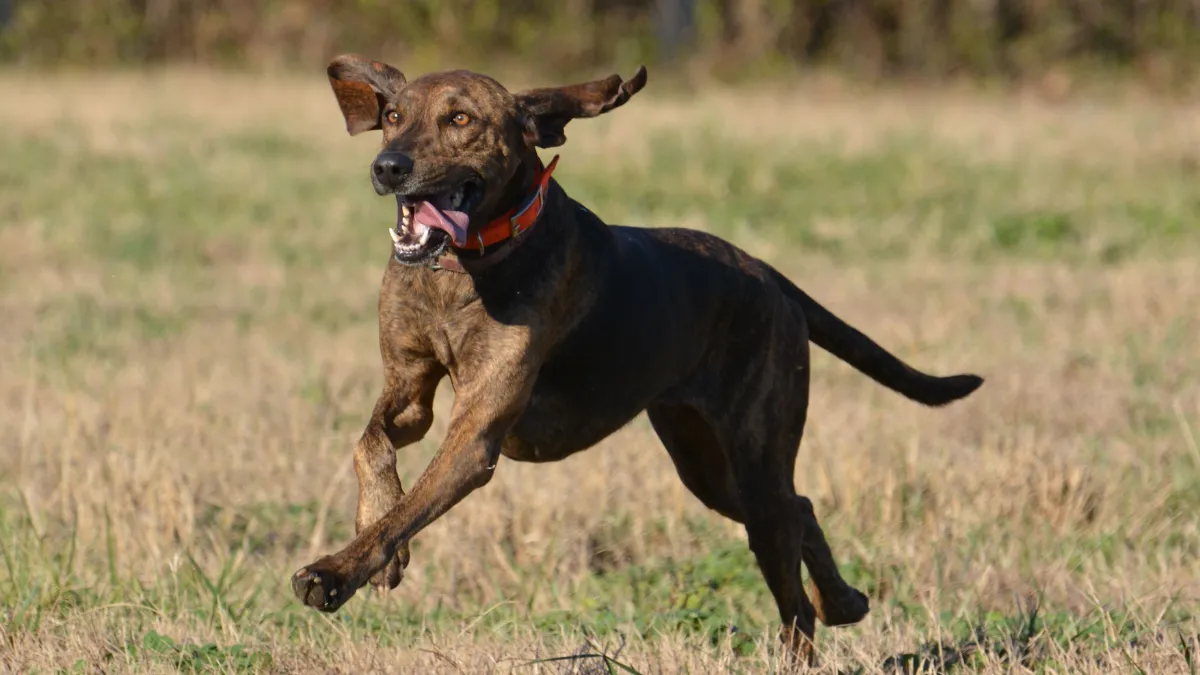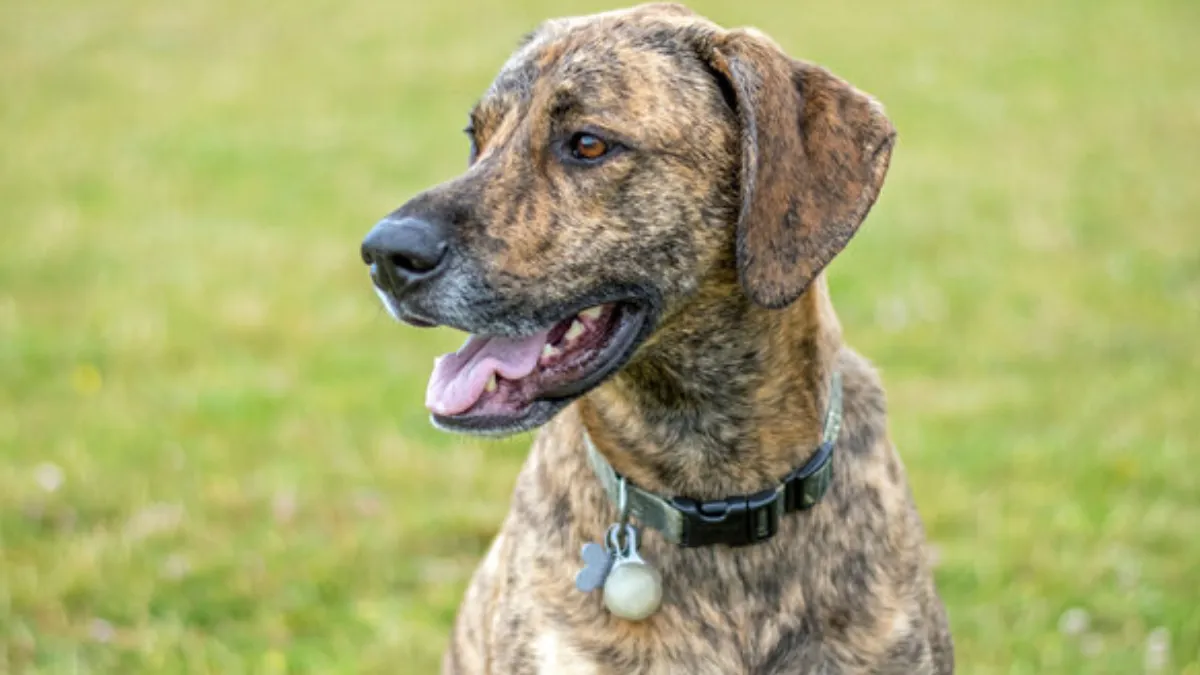The Plott Hound, renowned for its hunting instincts and loyalty, is an intelligent and energetic breed, ideal for outdoor enthusiasts. However, training a Plott Hound can be challenging, especially for first-time dog owners. Discover effective strategies and tips on How to Train a Plott Hound, ensuring a harmonious relationship with your spirited canine companion. With patience and consistent guidance, you can harness the full potential of their intelligence and create a well-behaved, well-adjusted pet.

To train a Plott Hound successfully, it is essential to understand their nature and characteristics. Plott Hounds are independent and can be stubborn, which means that they require a firm and consistent approach to training. Positive reinforcement techniques, such as treats and praise, can be effective in motivating these dogs to learn new behaviors.
One of the key factors in training a Plott Hound is socialization. These dogs need to be exposed to a variety of people, animals, and environments from a young age to prevent them from becoming fearful or aggressive. Early socialization can also help to prevent behavioral problems, such as separation anxiety and destructive chewing. With the right training and socialization, a Plott Hound can become a well-behaved and loyal companion for many years to come.
Understanding the Plott Hound
Plott Hounds are a breed of dog that originated in North Carolina and are known for their hunting abilities. They were named after the Plott family, who were instrumental in developing the breed. In 1989, the Plott Hound was declared the official state dog of North Carolina.
History and Origins
The Plott Hound's history can be traced back to Johannes Plott, a German immigrant who brought five Hanoverian Hounds with him when he settled in North Carolina in the late 18th century. The Hanoverian Hounds were eventually crossed with other breeds, including the Bloodhound and the Greyhound, to create the Plott Hound.
Physical Characteristics
Plott Hounds are muscular and athletic dogs that have short, glossy coats that can be tan, red, black, or brindle in color. They have a height of around 20-25 inches and can weigh between 40-60 pounds. They are known for their endurance and agility, which makes them excellent hunting dogs.

Temperament and Personality
Plott Hounds are intelligent and independent dogs that can be loyal and friendly with their owners. They are also known to be alert and aggressive when necessary, which makes them excellent guard dogs. However, they can also be dominant, which means they require a firm and consistent hand when it comes to training.
In conclusion, understanding the Plott Hound's history, physical characteristics, and temperament is crucial when it comes to training them. With the right approach and consistency, Plott Hounds can make excellent companions and hunting partners.
Health and Nutrition
Dietary Requirements
Plott Hounds are active dogs that require a balanced and nutritious diet to maintain their health and energy levels. It is important to choose a high-quality dog food that is specifically formulated for their size, age, and activity level. Plott Hounds need a diet that is high in protein and fat, but low in carbohydrates.
Owners should avoid feeding their Plott Hounds table scraps or human food, as this can lead to obesity and other health problems. It is also important to provide plenty of fresh, clean water at all times.
Common Health Issues
Like all breeds, Plott Hounds are prone to certain health issues. Some of the most common health problems include hip dysplasia, ear infections, and obesity. Hip dysplasia is a genetic condition that affects the hip joint and can cause pain and lameness. Ear infections can be caused by allergies, bacteria, or yeast, and can be prevented by regular cleaning and grooming.
Obesity can lead to a variety of health problems, including joint pain, diabetes, and heart disease. Owners should monitor their Plott Hound's weight and adjust their diet and exercise routine accordingly.

Grooming and Care
Plott Hounds have short, smooth coats that require minimal grooming. They should be brushed regularly to remove loose hair and prevent shedding. Nails should be trimmed regularly to prevent them from becoming too long and causing discomfort or injury.
Owners should also regularly clean their Plott Hound's ears to prevent infections and check their teeth for signs of dental problems. Regular exercise and playtime are also important for maintaining their health and happiness.
Training Your Plott Hound
Plott Hounds are intelligent and independent dogs that require consistent training from an early age. Proper training can help prevent behavioral problems and ensure a happy and healthy relationship between the dog and its owner. This section will cover basic obedience training, socialization and behavior, and advanced training techniques for Plott Hounds.
Basic Obedience Training
Basic obedience training is essential for all dogs, including Plott Hounds. This includes teaching the dog to sit, stay, come, and heel. Positive reinforcement is the most effective training method for Plott Hounds. This involves rewarding the dog with praise and treats when it performs a desired behavior. Plott Hounds are known to be stubborn, so patience and consistency are key when training them.
Socialization and Behavior
Socialization is important for all dogs, but especially for Plott Hounds. Early socialization can help prevent anxiety and behavioral problems. Plott Hounds should be exposed to different people, pets, and environments from a young age. This will help them become well-adjusted and confident dogs. Plott Hounds are also known to have a strong prey drive, so it is important to supervise them around small pets and children.
Advanced Training Techniques
Plott Hounds are natural hunters and trackers, so advanced training techniques such as hunting, tracking, and agility can be beneficial for them. Mental stimulation is also important for Plott Hounds, as they are intelligent dogs that require plenty of exercise and playtime. Games such as hide-and-seek and puzzle toys can provide mental stimulation and prevent boredom.
In conclusion, proper training and socialization are essential for Plott Hounds. Positive reinforcement, patience, and consistency are key when training them. By following these guidelines, owners can ensure a happy and healthy relationship with their Plott Hound.
Exercise and Play
Plott Hounds are highly active and energetic dogs that require regular exercise and play to maintain their physical and mental health. In this section, we will discuss the daily exercise needs of a Plott Hound and the different types of interactive play and activities that can keep them engaged and happy.
Daily Exercise Needs
Plott Hounds have a high activity level and endurance, and they enjoy running and exploring the outdoors. They require at least 60 minutes of exercise every day to stay healthy and happy. This can include brisk walks, jogs, hikes, or runs in the park or other open spaces.
It is important to note that Plott Hounds should not be left alone in a yard or tied up for long periods as they can become destructive and boring. They thrive on human interaction and enjoy spending time with their owners.

Interactive Play and Activities
In addition to daily exercise, Plott Hounds benefit from interactive play and activities that challenge their minds and bodies. Playing fetch, tug-of-war, and other games can keep them active and engaged.
Agility training is also a great way to provide mental and physical stimulation to Plott Hounds. It involves setting up obstacle courses and teaching them to navigate through them. This can help improve their coordination, balance, and overall fitness.
Indoor activities such as hide-and-seek, puzzle toys, and obedience training can also keep Plott Hounds mentally stimulated and prevent them from becoming bored or destructive.
In conclusion, Plott Hounds require regular exercise and play to maintain their physical and mental health. Owners should provide at least 60 minutes of exercise every day and engage in interactive play and activities that challenge their minds and bodies.
Living with a Plott Hound
Home Environment
Plott Hounds are known for their energetic and active nature, making them ideal for homes with ample outdoor space. However, with proper training and exercise, they can adapt to apartment living as well. It is important to provide them with a comfortable and secure shelter that protects them from harsh weather conditions.
Plott Hounds are also known to be protective of their families. They thrive in environments where they feel like they are part of a pack. Families need to establish a routine with their Plott Hound, including set feeding times and playtime.
Training for Home Life
Potty training is an essential aspect of training a Plott Hound puppy. Consistency is key when it comes to potty training, and it is important to establish a routine for your puppy. Crate training can also be helpful in potty training and providing a secure space for your puppy.
Leash training is also important for Plott Hounds, especially when living in an apartment or urban area. It is important to teach your Plott Hound to walk on a leash without pulling or jumping.

Establishing a routine for your Plott Hound is important for their overall well-being. It is important to provide them with ample exercise and playtime, both indoors and outdoors. With proper training and care, a Plott Hound can make a great addition to any home.
Hunting with Plott Hounds
Hunting Dog Heritage
Plott Hounds are a breed of hunting dog with a rich history. They were bred in the mountains of North Carolina by German immigrant Johannes Plott in the mid-1700s to hunt bears and wild boar. Plott Hounds are known for their incredible stamina, tracking ability, and bravery in the face of dangerous game. They are recognized by the American Kennel Club as a scenthound breed.
Training for Hunting
Training a Plott Hound for hunting requires patience, consistency, and a deep understanding of the breed's instincts. Plott Hounds are natural trackers and have a strong prey drive, but they also need to be trained to work with their handler and follow commands.
One important aspect of training a Plott Hound for hunting is socialization. Plott Hounds can be wary of strangers and other dogs, so it's important to expose them to different people and animals from a young age. This will help them develop into well-rounded hunting dogs that can work well in a pack or with other dogs.
Another key aspect of training a Plott Hound for hunting is teaching them to track and follow the scent. Plott Hounds have a keen sense of smell and can track game for miles, but they need to be trained to stay focused on the scent and not get distracted by other smells or distractions in the environment.
Overall, with proper training and socialization, Plott Hounds can make excellent hunting dogs for bear, boar, and other game. Their stamina, tracking ability, and bravery make them a valuable asset to any hunting party.
Plott Hound Breeders and Adoption
When it comes to getting a Plott Hound, there are two main options: buying from a breeder or adopting from a shelter or rescue. Both options have their pros and cons, and it's important to do your research and choose the best option for you and your family.
Choosing a Reputable Breeder
If you decide to buy a Plott Hound puppy from a breeder, it's essential to choose a reputable breeder who prioritizes the health and well-being of their dogs. Look for a breeder who is registered with the American Kennel Club (AKC) and who follows their breeding standards and guidelines.
A good breeder will be happy to answer any questions you have about their dogs, their breeding practices, and their health testing protocols. They should also provide you with a contract that outlines their responsibilities as a breeder and your responsibilities as a new puppy owner.
Be wary of breeders who don't allow you to meet the puppy's parents or who don't provide you with health clearances for both parents. These could be red flags that the breeder is not reputable and may be breeding dogs with health issues.
Adoption and Rescue Options
Adopting a Plott Hound from a shelter or rescue is a great option for those who want to give a dog a second chance at a happy life. Shelters and rescues often have Plott Hounds of all ages, from puppies to seniors, and they may also have dogs with special needs or health issues.
When adopting, it's important to ask the shelter or rescue plenty of questions about the dog you're interested in. Find out about their health history, temperament, and any behavioral issues they may have. It's also important to make sure the dog is up to date on all their vaccinations and has been spayed or neutered.

If you're not ready to commit to adopting a dog full-time, consider fostering a Plott Hound instead. Fostering allows you to provide a temporary home for a dog in need while they wait for their forever home. It's a great way to help out and get to know the breed before making a long-term commitment.
In conclusion, whether you choose to buy from a breeder or adopt from a shelter or rescue, it's important to do your research and choose the best option for you and your family. With a little bit of effort, you can find the perfect Plott Hound companion to join your family.
Conclusion:
Conclusively, mastering the intricate process of training a Plott Hound demands unwavering dedication and a profound understanding of their distinctive traits. Patience emerges as a virtue as owners navigate the challenges inherent in refining the intelligence and exuberance of these steadfast canines. The consistency applied in utilizing effective tips and techniques proves paramount, nurturing a robust bond between the owner and Plott Hound. The journey of training a Plott Hound not only unveils their remarkable hunting instincts but also showcases their profound capacity for loyalty and companionship.
By wholeheartedly embracing the specific needs of this breed and customizing training methodologies accordingly, owners can cultivate a well-behaved and responsive four-legged companion. In essence, the process of learning How to Train a Plott Hound evolves into a deeply gratifying endeavor, delivering both mental stimulation for the dog and a fulfilling companionship experience for the owner. This collaborative journey transforms challenges into triumphs, forging a harmonious relationship that underscores the remarkable adaptability and intelligence of the Plott Hound.